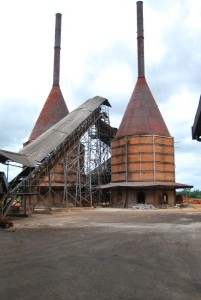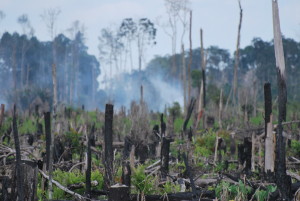This article is part of a special three-part series related to the Global Landscapes Forum 2016 – The Investment Case. This one-day experts symposium in London on June 6 aimed to accelerate investment in landscapes by connecting funds to farms and forests.
By Deanna Ramsay, originally published at Forests News

Financing sustainable landscapes – especially those associated with oil palm – is a delicate puzzle, but one with possibilities.
There is little homogeneity in our world. This is true even among those cultivating a single crop like oil palm, and the complexities involved mean attempts to support sustainable practices can be tricky. But there are also opportunities, especially in Indonesia where oil palm has been expanding rapidly, largely due to smallholders.
“What is interesting to note in Indonesia is that there is not a scarcity of resources flowing to support investments in oil palm, which is associated with the rapid growth of smallholders in the sector,” said Pablo Pacheco, a principal scientist at the Center for International Forestry Research (CIFOR).
“Yet many of these smallholders do not embrace good production practices, and continue to face low yields,” he added. “A major challenge is thus to put in place the necessary conditions to support the smallholder transition to more sustainable models of production.”
But who will pay for these costs?
“There is a lot of debate today over how to finance this transition, and what the role of financial players should be,” said Pacheco.
For those in the finance sector, the search for the best methods to support sustainable practices among smallholders, such as those typically cultivating small land plots measuring less than two hectares, has only just begun.

“Sustainability standards have been produced to guide sustainable production, but often from the perspective of large-scale producers. Those standards are not often embraced by smallholders – and this is just increasing the gap. We have to ensure that the move to sustainable commodity supplies doesn’t contribute to the continuing marginalization of smallholders.”
For instance, small oil palm farmers often have little control over what prices they receive for their harvests, and are generally dependent on mills owned by large corporations.
“The most important contribution of the finance sector, which strongly supports big plantation companies with equity investments and loans, is to use its influence to change the balance of power and let the plantation companies treat smallholders as equal partners with whom they strive for improved livelihoods and more sustainable production practices,” said Jan Willem van Gelder, Director of Profundo, an Amsterdam-based research consultancy specialized in international commodity chains.
At the moment, smallholders have little access to high quality seeds or fertilizers, which leads to low yields. This means farmers often labor from harvest to harvest in a vulnerable state.
“One of the fundamental issues in upgrading the oil palm supply base is investing in increasing yields by replanting plots using better seed varieties,” said Sophia Gnych, a scientist at CIFOR.
“But there are complications associated with this. In pulling out old trees and planting new ones, the wait is three to five years before there are new fruits. This has income implications for smallholders and is a major finance challenge.”
According to Hans Smit, a senior advisor at the international development organization SNV, it is critical that smallholders are supported to increase yields through replanting rather than expansion. But that requires access to finance.
“The challenge is to enable financial institutions to provide loans to smallholders at scale and at low interest rates,” he said. “In order to achieve that, financial institutions need to understand the risks and to provide sizeable loans at a group level.
“We have created a credit-scoring tool that maps out the cash flow for households in replanting scenarios and assesses their bankability. With such a tool, we can immediately see if a farmer is bankable, and if not why.”
With the information they are able to garner on the ground, risks can be better understood and groups of farmer loans could be packaged into portfolios to minimize risks and offer farmers competitive wholesale interest rates, Smit added.
“What is going to be important in the Indonesian case is considering how formal credit can compete with informal sources of credit that provide more flexibility to smallholders,” said Pacheco. “The question is how to make formal credit more attractive to smallholders, especially as it has more rigid terms for repayment.”
Blending informal and formal credit methods could be an option, Pacheco added.
Creating such solutions – with optimum results for both smallholders and financiers – requires discussion and collaboration.
“To find a successful model, various stakeholders need to be involved,” said van Gelder. “The finance sector, the plantation companies, the smallholders, as well as local and national governments that can make sure that land titles are clear, infrastructure is developed and that other risks are covered.”
In one move toward crafting solutions, a session at the Global Landscapes Forum 2016: The Investment Case in London on June 6 addressed this knotty topic, bringing together diverse representatives from finance, development, government and the corporate sector to discuss how to best support sustainability among smallholders.











